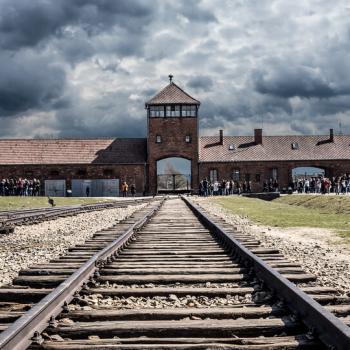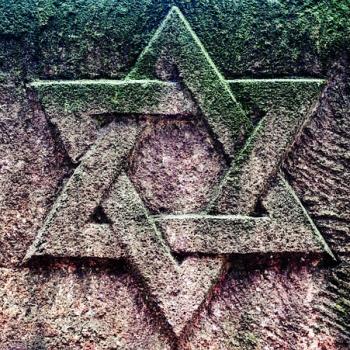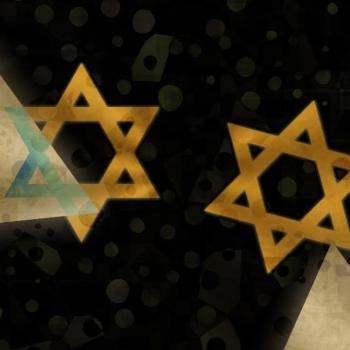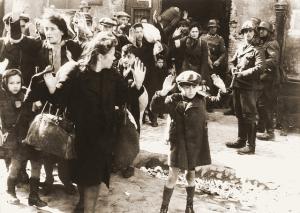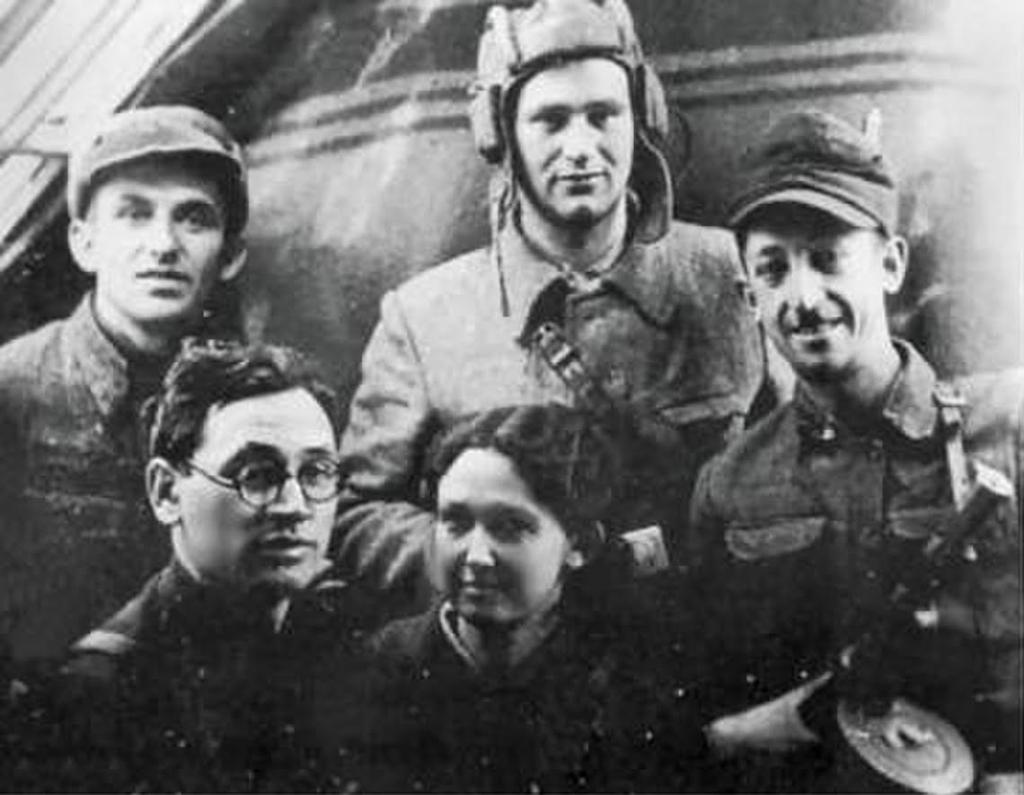
And a Plea for Christians to Take Heed
With antisemitism on the rise worldwide, it is time that Christians and others who value human life shine not one light — but billions of lights — on hatred. This wide-ranging post attempts to shed my small light on antisemitism, share true stories of how Jews fought back against the Nazis during World War II, and remind Christians of Christ’s teachings about love and hate. And while my post targets antisemitism, its message applies to hatred of all kinds anywhere in the world.
Two new films are telling true stories of bravery in the face of antisemitism during World War II. One is Escape from Germany, which concerns a group of missionaries trapped in Nazi Germany at the outbreak of war. The other is Resistance: They Fought Back, which tells how Jews fought the Nazis. Both films opened in theaters on April 12.
Shedding One Small Light on Hatred
Hatred, no doubt, has existed since humans began to populate the world, and it may be with us until we destroy ourselves because of it. Yet, we should not let it go unchallenged.
If you know anything about 20th century history, you know that a tepid response to hatred led to a global war that resulted in an unimaginable 75,000,000 to 85,000,000 deaths through massacres, mass bombings, starvation, disease and – the most sickening of all — genocide.
(Check out the following websites for more information about World War II and the Holocaust:
- United States Holocaust Memorial Museum
- The 75th WWII Commemoration Organization: The History of World War II
- Jewish Virtual Library
- The Wiener Library: The Holocaust Explained
- The World Population Review: World War II Casualties by Country
You may also want to read one of my previous posts from April 2023, As Antisemitism Reaches Crisis Level, Christians Must Fight — Here’s How. It addresses ugly myths about Jews since ancient times, the Jewishness of Christ, biblical teachings about hating others, hate speech and how Christians can fight antisemitism.
Patheos also has these posts on antisemitism, which may interest you as well:
Hate Surge: Unpacking Antisemitism & Islamophobia by Ken Chitwood, who describes himself as “a religion nerd, writer and scholar of global Islam and American religion based in Germany
The Origins of Anti-Semitism by Shawn Higgins, a Brooklyn-based historian of religion and graduate of Harvard Divinity School
Both Antisemitism and Islamophobia Are Unacceptable by Henry Karlson, a Patheos contributor, author, independent scholar and Byzantine Catholic, whose background includes studies in early church history and theology.)
New Films Spotlight Antisemitism
Escape from Germany tells the true but little-known story of 85 Latter-day Saints missionaries who were serving in Germany when Hitler closed the borders in 1939, according to IMBd, an online site dedicated to movies, television shows, podcasts, video games and the like.
IMBd adds, “In the fall of 1939 (Latter-day Saints) President Heber J. Grant sent an urgent message to Mormon missions in Germany. THE WAR IS GOING TO START IN 3 DAYS. GET OUR MISSIONARIES OUT OF GERMANY.
The missionaries’ escape was harrowing and miraculous at times. One day before Germany invaded Poland and World War II officially began, the last missionary finally escaped to relative safety in Denmark.
Never Is Now
We tend to think that World War II and its aftermath are ancient history. We’re wrong. When antisemitism rears its ugly head, we find ourselves fighting the same evil our parents and grandparents fought in the early-to-mid-20th century, e.g. World War II and the Holocaust.
Never again, people said at war’s end. But never is now.
World War II isn’t long-ago history in another way: On March 5, 2020, an elderly East Tennessee man was ordered to leave the United States. He was a German who had lived in the U.S. for many years… until the U.S. government learned about his past and deported him in June 2021.
Berger was 95 when he was forced to leave, though he insisted he did nothing wrong during the war. But the U.S. decided otherwise when officials discovered that he had worked in the Nazis’ Neuengamme concentration camp system.
I was just a guard, Berger was quoted as saying. I am not SS.
Just an armed guard…. One of countless Nazi armed guards who prevented Jews and other victims of the Holocaust from escaping their captors.
I’m just an ordinary person who minds my own business, people may say today. Antisemitism has nothing to do with me. My opinion isn’t important.
But hatred is everyone’s business, especially Christians’, because Christ taught and demonstrated love throughout his ministry on earth. If we deny this major teaching, we are, in effect, admitting our faith is a sham to God, ourselves and the people around us.
Resistance: They Fought Back
But I digress…. Resistance: They Fought Back is a documentary that chronicles how Jews fought back against the Nazis before and during World War II. It debunks the myth that Jewish victims of the Holocaust were led like sheep to the slaughter.
IMBd says, There were more than 90 armed rebellions in ghettos and concentration camps, thousands of Jewish partisans fighting in the forests, as well as countless examples of non-violent resistance against the Nazis. A website, social media campaign and educational materials supplement the film.
Resistance: They Fought Back and Escape from Germany will no doubt be difficult to watch, but the world needs to see them.
How Did It Happen?
The Nazis didn’t suddenly announce they planned to exterminate the Jews. Rather, information regarding mass murders of Jews began to reach the free world soon after these actions began in the Soviet Union in late June 1941, according to the American-Israeli Cooperative Enterprise. And the volume of such reports increased with time.
The early sources of information include German police reports intercepted by British intelligence; local eyewitnesses and escaped Jews reporting to the underground, Soviet or neutral sources; and Hungarian soldiers on home leave….
In general, Jews didn’t have the weapons to effectively fight the Nazi war machine. After all, it took Allied armies from the U.S., Great Britain, the Soviet Union and other countries – along with partisan fighters from all over Europe – to defeat Germany.
The Jews also were surrounded by antisemitic people throughout Europe. Some of these people hated the Nazis but refused to risk their own lives to help the Jews. Others supported the Nazis, and some even collaborated with them.
The Warsaw Uprising
Britannica states that when European Jews realized the Nazis plans, they resisted in the forests, in the ghettos, and even the death camps. They fought alone and alongside resistance groups in France, Yugoslavia, and Russia. As a rule, full-scale uprisings occurred only at the end, when Jews realized the inevitability of impending death.
And the United States Holocaust Memorial Museum describes how Jews fought back in greater detail: Jewish civilians offered armed resistance in over 100 ghettos in occupied Poland and the Soviet Union…. Their main goals were to organize uprisings, break out of the ghettos, and join partisan units in the fight against the Germans.
The Jews knew that uprisings would not stop the Germans and that only a handful of fighters would succeed in escaping to join with partisans, the museum says. Still, numerous Jews made the decision to resist.
Further, under the most adverse conditions, Jewish prisoners succeeded in initiating resistance and uprisings in some Nazi concentration camps, and even in the killing centers of Treblinka, Sobibor, and Auschwitz, the Holocaust Museum explains.
Other camp uprisings took place in camps such as Kruszyna (1942), Minsk Mazowiecki (1943), and Janowska (1943). In several dozen camps, prisoners organized escapes to join partisan units.
Jewish resistance fighters led by Abba Kovner organized in late 1941 and fought the Germans in September 1943, Britannica says. Another group, led by a gay artist named Willem Arondeus, bombed and destroyed an office that contained records of Jews and others sought by the Nazis.
The Warsaw Uprising, which also occurred in 1943, saw Polish Jews in Nazi-occupied Warsaw rise up against occupation and deportation to the Treblinka death camp. There also were uprisings in Treblinka, Auschwitz and Sobibor. At Treblinka, prisoners who worked near the gas chambers destroyed a crematorium.
An Amazing Story of Resistance
Yet, one of the most amazing stories of resistance is that of Mordechai Schlein, aka Motele. The Nazis captured the 12-year-old boy’s father, mother and sister and sent them to Auschwitz. They also murdered his family’s neighbors – who were Jewish — while Motele hid in the victims’ attic.
Their screams reverberated in his attic hiding place, the Holocaust museum says.
Motele remained hidden in the attic until dark, when he slipped out of the house and made his way into a nearby forest. He took only his beloved violin with him.
He wasn’t the only Jewish person hiding in the forest. There also were partisan groups that were actively attacking Nazi units and helping the Allied forces. Motele joined one of the groups and was asked to keep an eye on Jewish partisans in a nearby town, according to the museum.
How Jews Fought Back
Motele — whose blond hair belied his Jewish ancestry — took his violin and soon joined a group of beggars who often gathered outside a church in the town. The boy was an excellent violinist, and as he played Ukrainian folk songs, a Nazi officer heard him and demanded that he play for Nazi soldiers and officers who frequented a nearby restaurant.
The young boy was almost immediately hired to play there regularly. Thus, he could overhear the Nazis’ conversations and report back to the partisans. It was a dangerous mission. If he were caught, he would certainly be killed and the Jewish partisans hiding in the community would be hunted down and killed as well.
One day as Motele played, he noticed deep cracks in the restaurant’s foundations and passed the information to the partisan group’s leader. With this information, they devised a plan.
Motele began hiding his violin in the restaurant and using his violin case to smuggle dynamite into the building. Somehow Motele managed to empty his case, hide the explosives in the restaurant, and retrieve and play his violin, day after day, without being caught, the museum recounts.
He carried nearly 40 pounds of bomb-making materials into the building and packed it into the cracks he had spotted earlier. Then he waited. Finally one day, some 200 senior SS men came into the restaurant for more than a few drinks.
Motele played for them late into the night and then slipped into the storeroom. In the dark he found the end of the bomb stick and ignited it, the partisan group’s leader later recounted. Motele than calmly picked up his violin, walked upstairs, and slowly made his way to the restaurant’s front door.
He even stopped to joke with one of the Germans and ended the conversation with the Heil Hitler salute. Then, he left the restaurant. He was 200 meters away when the bomb went off, causing an enormous roar, the Holocaust museum recounts. The leader of the Jewish partisans met Motele, and the two escaped into the woods.
“This is for my parents and little Bashiale,” Motele declared as he raised his fist.
Epilogue
Motele continued to fight with the Jewish partisans until 1944, when he was killed in a battle against the Nazis. He was 14. His violin was rescued and eventually restored and showcased with other similar musical instruments played during the Holocaust, according to the museum.
All told, the Nazis, their allies and collaborators committed mass murder on an unprecedented scale during World War II. State-sponsored genocide resulted in the deaths of 6,000,000 Jews and millions of non-Jewish people. The victims were sent to gas chambers, shot to death, starved and otherwise brutalized.
Tragically, it could happen again if our generation and future generations do nothing to stop it.
Some people roll their eyes when they hear the word history, but history is fascinating and important. If we don’t know and understand our history, we cannot live better lives and attempt to avoid the sins of past generations.
If you want to know more about antisemitism, World War II and how Jews fought back below, check out these websites:
- United States Holocaust Memorial Museum
- 75th WWII Commemoration Organization: The History of World War II
- Jewish Virtual Library
- The Wiener Library: The Holocaust Explained
And don’t forget to check out the two films that premiered April 12, Escape from Germany and Resistance: They Fought Back, at your local theater.




